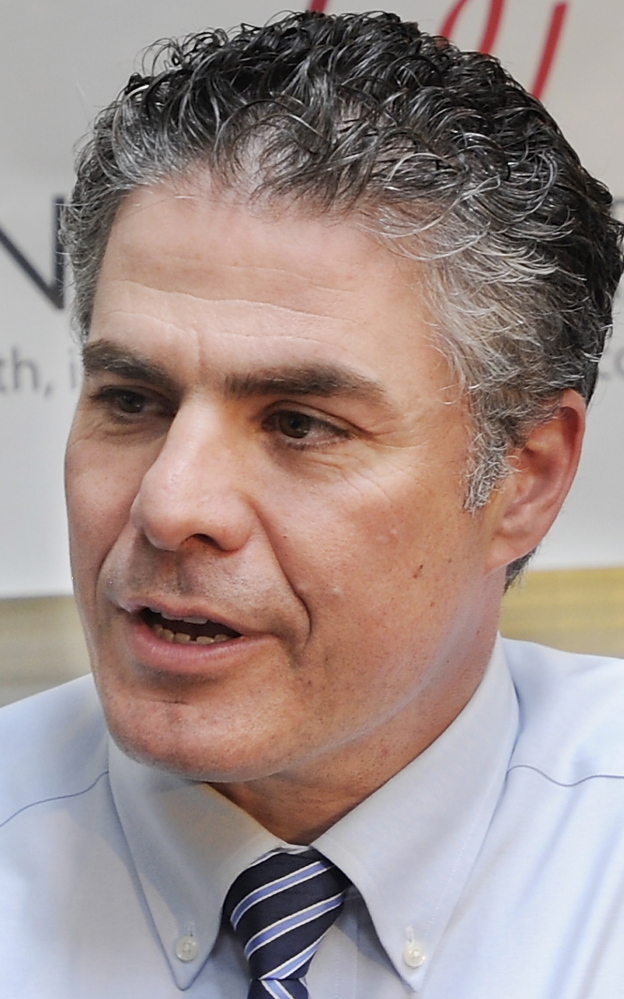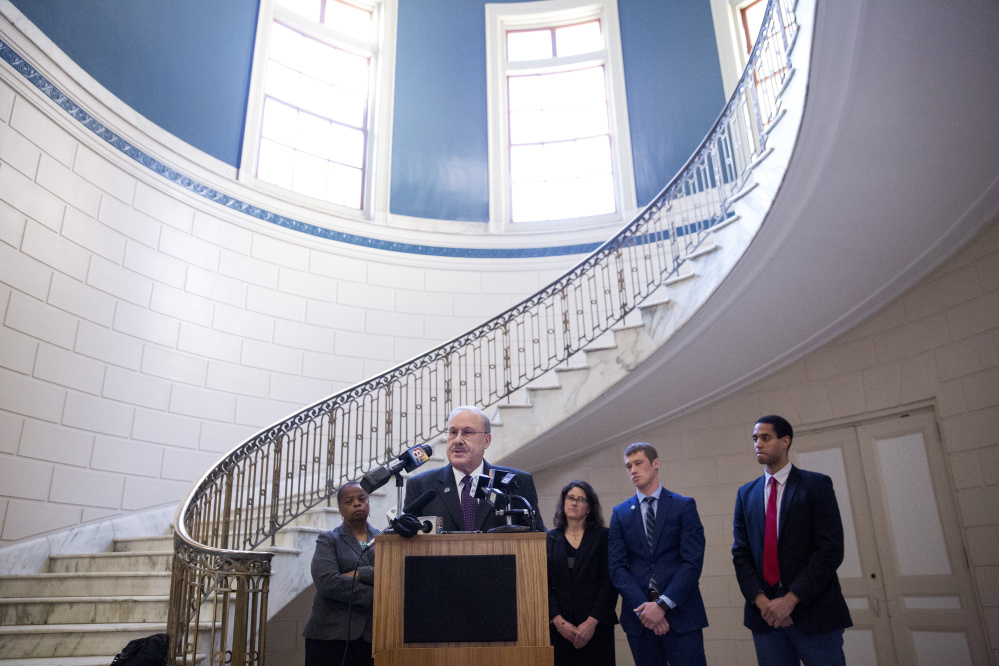Portland is one step closer to putting body cameras on police officers.
City officials confirmed Thursday that the city has secured $26,000 in seed money to purchase a limited number of body cameras for a pilot program, a first step toward widespread implementation by the department. But before the cameras can be rolled out, the city must reach an agreement with the police union.
Mayor Ethan Strimling voiced support for body cameras in January and pushed for the city to speed up implementation after a Portland officer shot and killed a man in February. On Thursday, the mayor said he was pleased that the city had received permission to use leftover federal grant money to fund a pilot program.
“It’s a good step forward,” he said. “I look forward to seeing what the police department brings forward for a policy and it can be reviewed by the council.”
The pilot program will deploy eight cameras and allow the city to develop policies on camera usage, data storage and under what conditions those recordings could be made available to the public. In the longer term, Portland has earmarked $400,000 in the 2019 budget to equip its officers with the cameras.
City Hall Communications Director Jessica Grondin said city staff would not comment on any timeline for rolling out the first round of cameras, or discuss the ongoing negotiations with the police union.
Strimling is confident that the city is moving as expeditiously as possible. “I do feel we will be able to get this in place sooner rather than later, but it’s important to get it right,” he said.
Officer James Keddy, president of the Portland Police Benevolent Association, which represents 118 officers, could not be reached for comment.
EARLY CAMERA USERS STUDYING IMPACT
The national focus on police body cameras arose after the Aug. 9, 2014, killing of Michael Brown, a black teenager in Ferguson, Missouri. Brown was shot by a white officer who was later cleared of wrongdoing in the case. Intense scrutiny of the course of events, and early, sometimes contradictory information about how the shooting unfolded, led to widespread calls for more cameras and more transparency.
Now, federally funded research is underway to examine the cameras’ overall effect on law enforcement and community relations. In 2015, the U.S. Department of Justice offered $20 million in grants for departments to adopt the equipment and develop policies on their use.
In Maine, police in Fairfield, Gardiner, Wilton, Farmington, Richmond, Monmouth and Winslow were using body cameras as of January, according to the Maine Chiefs of Police Association.
South Portland joined them at the end of January, and Police Chief Edward Googins said his officers seem to understand the importance of the cameras, even though there have been some “hiccups” along the way, including broken cameras. Googins said the department is reviewing its policy on a quarterly basis. He said the department has 24 cameras and that it’s too soon to tell whether that number will grow.
“It sounds easy, but it is not,” Googins said. “It impacts their jobs more than you would think. They have to remember when to turn it on and turn it off. But overall, I’m very pleased with the way it’s gone.”
Portland officials have said they have been quietly working on a police body camera program for nearly a year. However, the issue was thrust to the forefront in February after police shot and killed 22-year-old Chance David Baker at the Union Station Plaza on St. John Street.
Police had responded to a report of a man, who appeared to be intoxicated, brandishing a rifle in broad daylight. Police said Sgt. Nicholas Goodman ultimately shot and killed Baker after he allegedly refused to comply with orders. The weapon was later determined to be a rifle-style pellet gun.
PUSH ACCELERATES AFTER SHOOTING
After the Feb. 18 shooting, Strimling and groups such as the American Civil Liberties Union of Maine and the Portland chapter of the NAACP called on the city to accelerate the deployment of body cameras. That prompted Police Chief Michael Sauschuck to tell reporters that he was “disgusted” that the groups were using Baker’s death “to further some kind of political agenda.”
Strimling had planned to include $50,000 in the city’s Capital Improvement Plan for the cameras, but that budget was approved Wednesday without a discussion of the issue. Leading up to that meeting, Strimling indicated he would not seek to include funding in the capital plan, but stopped short of saying the city already had secured funding.
Four days after the shooting in February and two days after Strimling called for faster deployment of body cameras, city councilors held a news conference and said they also supported body cameras and that funding already had been secured. At that time, councilors said the city was awaiting word from the Department of Justice about whether it would be able to use $26,000 in leftover grant money for the cameras.
The city formally applied for permission from the Justice Department to use the leftover funds on the same day as the council’s news conference, according to records obtained through Freedom of Access Act request by the Portland Press Herald. On Thursday, the city provided documents showing the Justice Department approved the funding March 20, allowing the city to purchase eight cameras.
Correction: This article was updated at 8:37 a.m. on Friday, April 7, 2017 to correct the name of the man shot by police at Union Station Plaza.
Randy Billings can be contacted at 791-6346 or at:
Send questions/comments to the editors.




